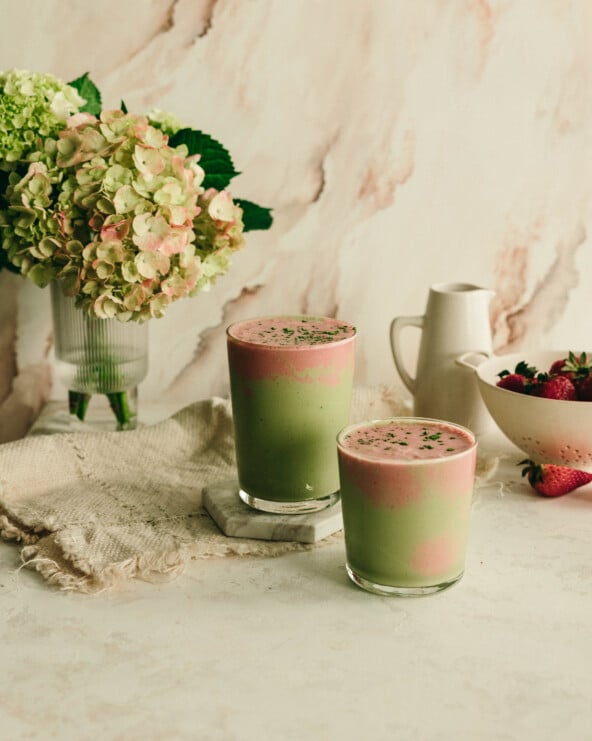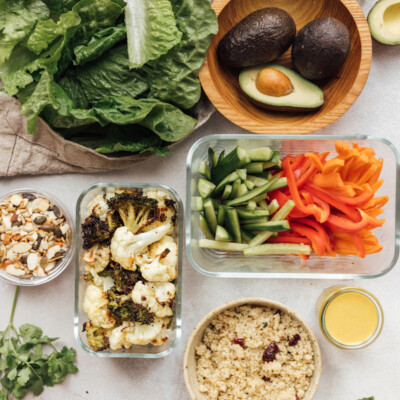It’s smoothie season, ya’ll. And when you nail that perfect ratio of fruit to liquid, nothing hits quite like a refreshing glass of velvety goodness. But is your smoothie a stable blend of balanced nutrients—or a one-way ticket to a steep energy crash? Despite their convenience of vitamins and minerals, not all smoothies are created equal. In fact, most can inadvertently send your blood sugar on a rollercoaster ride. No thanks! So, where does the secret lie? In crafting a high-protein, high-fiber smoothie. Consider this the ultimate guide to balanced, healthy smoothies (that don’t skimp on deliciousness).

What is blood sugar?
Before we sip our way to satiation, let’s talk about blood sugar. After all, it’s foundational for both short-term and long-term health. Plus—once you get the basics down pat—you’ll know exactly how to avoid that aforementioned roller coaster ride. Blood sugar (or glucose) is our body’s primary source of energy. It’s fuel for our cells. We get it from sweet and starchy carbs (think: carrots, quinoa, and cookies). When we eat these foods, they’re broken down into glucose. And this glucose enters our bloodstream. Like a lock and key, insulin shuttles that sugar into our cells. In turn, it’s used for energy.
What are healthy blood sugar levels?
Normal blood sugar levels typically range between 70-140 mg/dL. You want to be in the 70-90 mg/dL range before meals and less than 140 mg/dL two hours after eating. But how do you know if you’ve achieved that sweet spot? A continuous glucose monitor (CGM) does the trick. This wearable device provides specific feedback on which foods do—and don’t—spike your blood sugar. But even without a CGM, you’ll know you’re on the right track, thanks to stable energy levels and mood, rhythmic (but not constant) hunger, a healthy weight, and normal menstrual cycle.
Impacts of a Blood Sugar Spike or Drop
Neither makes you feel great. Consistently high blood sugar levels lead to increased hunger, mood swings, headaches, fatigue, and more. In the long-run, chronically elevated blood glucose causes insulin resistance. And this manifests in hormonal imbalances, weight gain, and an increased risk of type 2 diabetes. On the other hand, plummeting blood sugar levels lead to symptoms like sugar cravings, shakiness, sweating, and irritability.

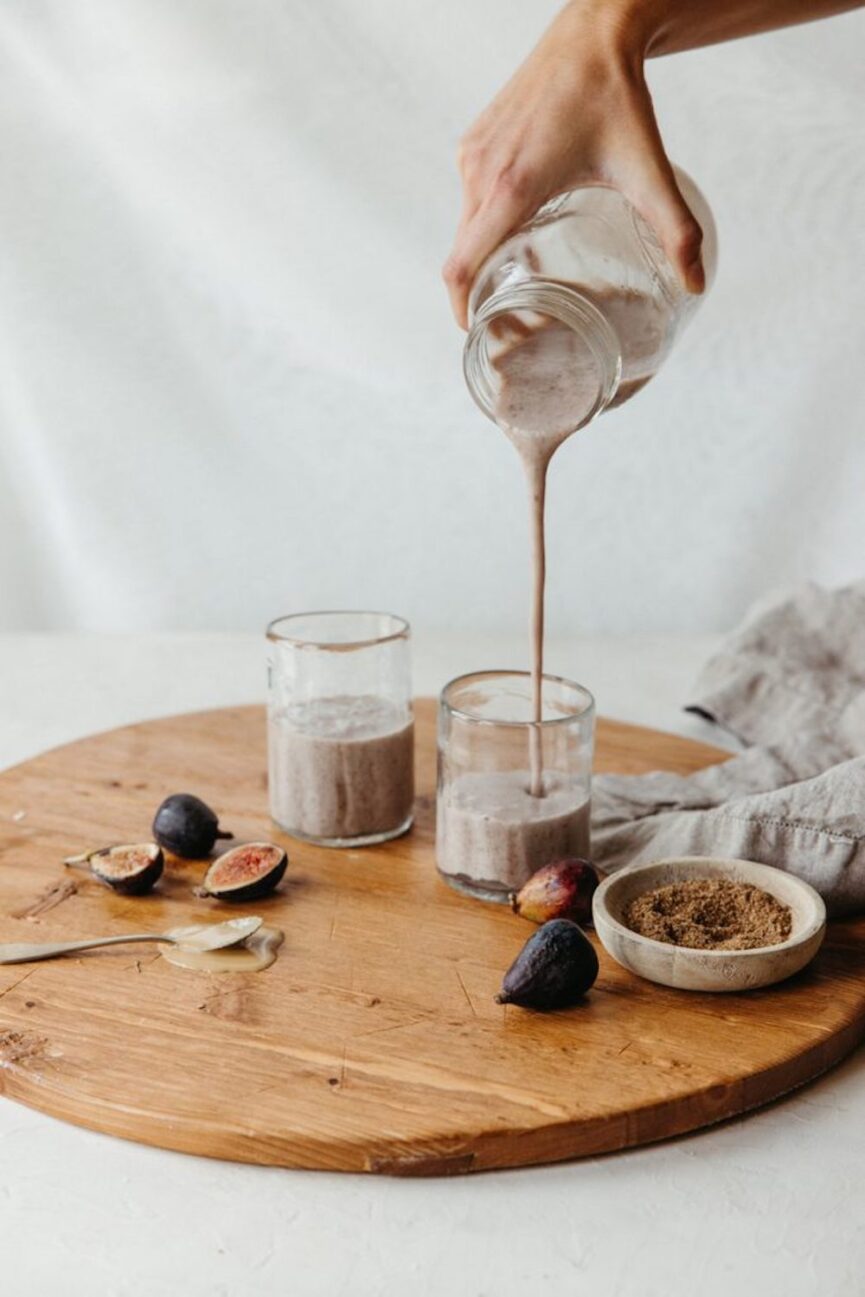
10 Tips to Keep Your Blood Glucose Balanced
Of course, one effective way is to craft high-protein, high-fiber smoothies! However, these lifestyle and diet tips also hit the mark:
- Eat regular, balanced meals. Aim for nourishing meals throughout the day, spaced evenly apart (for most, that’s every 3-4 hours). Include a combination of complex carbs, protein, healthy fats, and fiber-rich foods in each meal—these promote steady energy release and satiety.
- Choose low-glycemic ingredients. Opt for whole, unprocessed foods with a low glycemic index (GI). This means they cause a slower and more gradual increase in blood sugar levels. Examples include non-starchy veggies, leafy greens, legumes, nuts, seeds, and berries.
- Monitor portion sizes. Pay attention to portion sizes to avoid overeating, which can lead to spikes in blood sugar levels. Use smaller plates, bowls, and utensils!
- Include protein with each meal. Incorporate 20-40 grams of protein (poultry, fish, tofu, legumes, eggs, cottage cheese, Greek yogurt, etc.). Protein helps slow down the digestion and absorption of carbs—thus preventing blood sugar spikes.
- Focus on fiber-rich foods. Like protein, fiber helps regulate blood sugar levels by slowing down the absorption of glucose. These are a few of our favorite high-fiber ingredients!
- Stay hydrated. Dehydration can affect blood sugar levels, so keep your water bottle (filled with electrolytes) nearby. Limit sugary beverages and opt for herbal tea, sparking water, or infused water instead.
- Limit added sugars and refined carbs. Try to minimize your consumption of foods and bevvies high in refined sugars. These foods can cause rapid spikes in blood sugar levels.
- Exercise regularly. Exercise has a significant impact on blood sugar. Aim for at least 150 minutes of moderate-intensity aerobic exercise per week—but don’t underestimate the power of 15-20 minute walk after eating. Strength training a few days per week is also key!
- Manage stress. Chronic stress can lead to hormonal imbalances that may spike blood sugar. Practice stress-reducing techniques (we love meditation and spending time in nature) to help manage stress levels.
- Get adequate sleep. Last but not least, prioritize high-quality sleep each night (7-9 hours), as inadequate sleep can disrupt hormone levels and lead to insulin resistance.

How to Build a Blood Sugar-Friendly Smoothie
Rich in protein, fiber, healthy fats, and non-starchy carbs, a balanced smoothie is also a blood-sugar friendly smoothie. In turn, this nutrient-packed bevvie provides sustained energy. So, what are the components of a blood sugar-friendly smoothie?
Protein
Protein is an essential macronutrient. It keeps us full and satisfied while stabilizing blood sugar levels—a win-win. Strive for at least 20 grams of high-quality protein, such as:
- Greek yogurt. Rich in protein and probiotics, it adds creaminess to your smoothie. Adding 1/4-1/2 cup of Greek yogurt will increase your protein count by upwards of 10 grams. Cottage cheese is even higher in protein!
- Whey protein powder or collagen peptides. Provides a convenient protein boost without added sugars or artificial ingredients. Of course, there are plenty of vegan protein powder options too!
- Silken tofu. A plant-based option that blends seamlessly into smoothies, offering a creamy texture and protein punch.
Fiber
Fiber plays a crucial role in slowing down the absorption of sugar into the bloodstream, preventing rapid spikes. Incorporate fiber-rich ingredients like:
- Leafy greens. Spinach, kale, or Swiss chard are excellent sources of fiber and magnesium.
- Chia seeds. Packed with soluble fiber and omega-3 fatty acids, chia seeds thicken your smoothie while promoting satiety.
- Flaxseeds. Another omega-3 powerhouse, flaxseeds add fiber and a nutty flavor to your blend.
Healthy Fats
Including healthy fats in your smoothie does triple work: helps stabilize blood sugar levels, encourages satiety, and improves the absorption of fat-soluble vitamins and minerals. Toss in a serving or two of healthy fats, like:
- Avocado. Creamy and rich in monounsaturated fats, avocado enhances the texture of your smoothie while providing a satiating effect.
- Nut butters. Whether it’s almond butter, peanut butter, cashew butter, or tahini, these spreads add richness and flavor along with healthy fats.
- Coconut oil. A source of medium-chain triglycerides (MCTs), coconut oil boosts energy and helps keep blood sugar levels steady.
Non-Starchy Carbs
Carbs are often demonized in the context of blood sugar management, but non-starchy veggies are low in carbohydrates and high in fiber, making them an excellent addition to your smoothie. Consider ingredients like:
- Cucumber. Refreshing and hydrating, cucumber adds volume to your smoothie without significantly impacting blood sugar levels.
- Celery. Crisp and crunchy, celery is low in calories and carbohydrates while providing a subtle flavor profile.
- Zucchini. Blend zucchini into your smoothie for a creamy texture and a boost of vitamins and minerals.


Ingredients to Avoid in Smoothies
Allergies and intolerances aside, what ingredients should you avoid in your smoothie? With blood sugar in mind, high-glycemic fruits will cause glucose to sharply rise. These include:
- bananas
- mangoes
- pineapples
- sweetened yogurt
- honey
- fruit juices
Additionally, using large quantities of dates, dried fruits, and oat milk can contribute to rapid increases in blood sugar levels. Instead, opt for lower-glycemic fruits and non-dairy (or whole) milk.
When is the best time of day to drink a smoothie?
This depends on your personal preferences and lifestyle! Having a smoothie for breakfast is a quick and convenient way to start the day—especially if you’ve gathered most of the ingredients ahead of time. Smoothie baggies are great for meal prep! Others prefer a snack-time smoothie or a post-workout replenisher. Ultimately, it’s about finding what works best for you and fits into your daily routine.

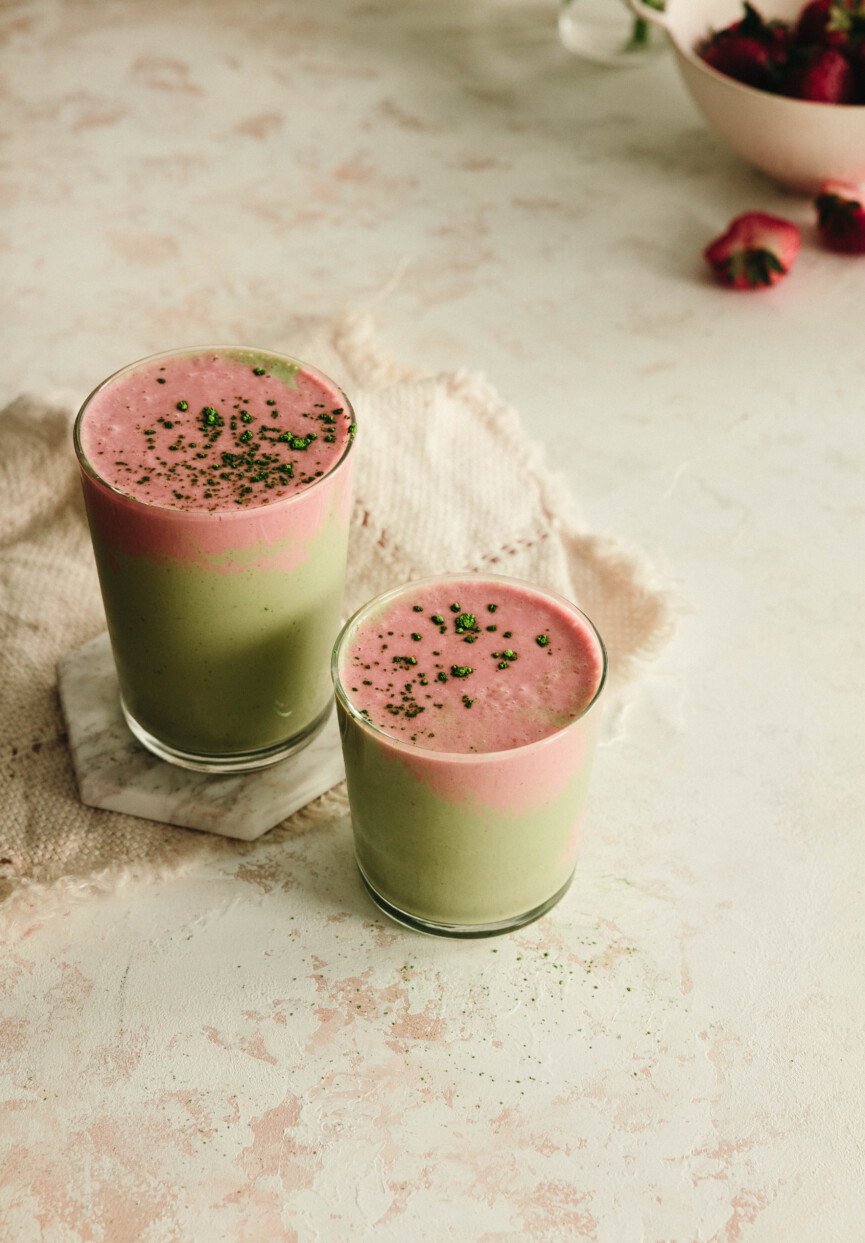
5 Balanced Smoothie Recipes
These high-protein, high-fiber smoothie recipes come together in no time and they pack a nutritious punch. Add them to your weekday breakfast rotation or enjoy them as an afternoon snack. (Or! Sip on a blood sugar-balancing smoothie anytime you’d like—the options are endless.)
Strawberry Matcha Smoothie
Dare we say this is the most beautiful high-protein, high-fiber smoothie? Rich in fiber from the strawberries, all this smoothie is missing is a bit more protein! To amp up the protein count, use Greek yogurt (or skyr) instead of plain yogurt and add a scoop of your favorite vanilla protein powder. P.S. If you want more fiber, sneak in a couple of handfuls of spinach. It won’t change the taste!

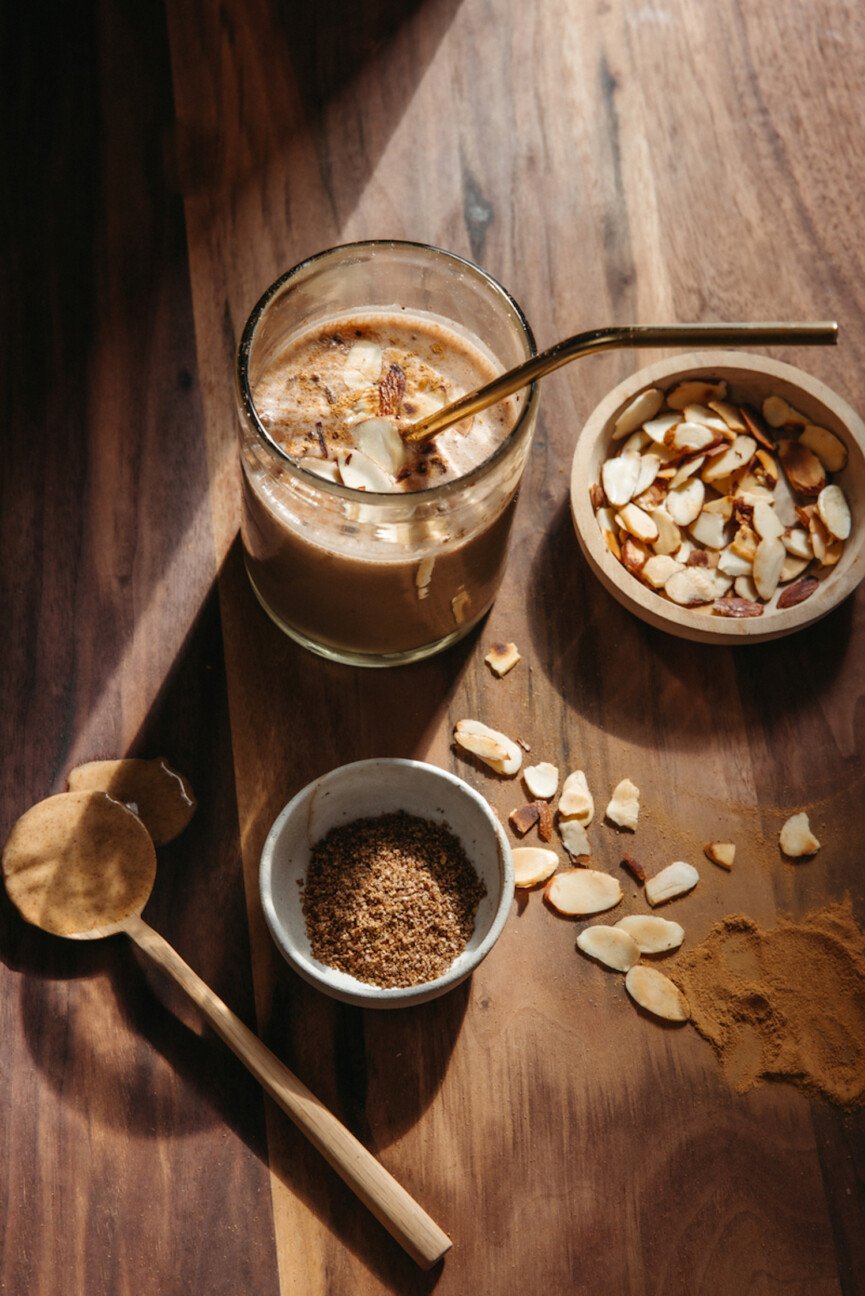
Chocolate Banana Almond Butter Smoothie
Yes, this smoothie is as delicious as it sounds, and is sure to satisfy your chocolate-peanut butter cravings! A beautiful balance of carbs, fats, fiber, and protein—it’s a slam dunk in terms of lasting energy.

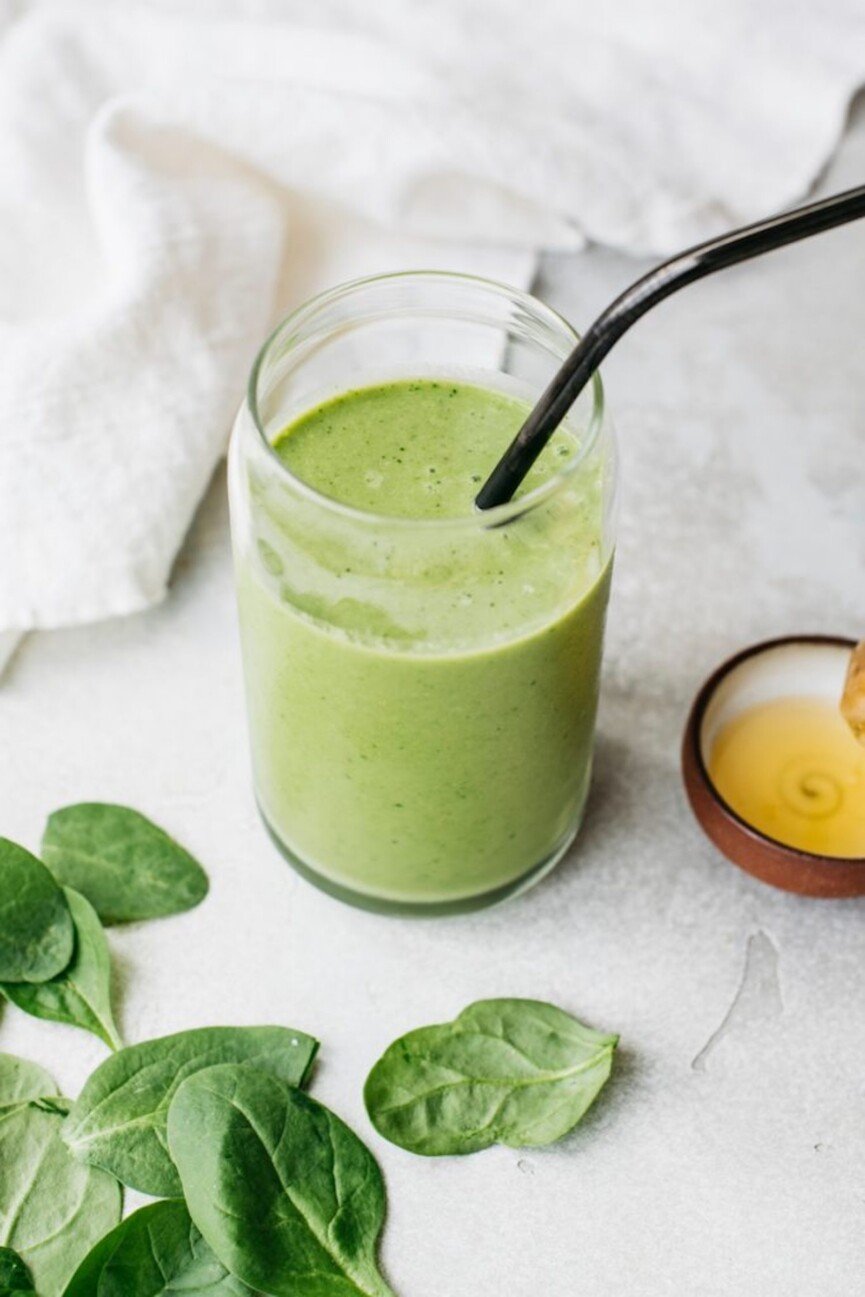
Healthy Green Smoothie
A classic, this nourishing green smoothie is the little black dress of breakfasts. To make it more blood sugar-friendly, sub the oat milk for unsweetened almond, coconut, or hemp seed milk (whole cow’s milk works too!). For more protein, toss in 1-2 scoops of unflavored collagen peptides or vanilla protein powder of choice.

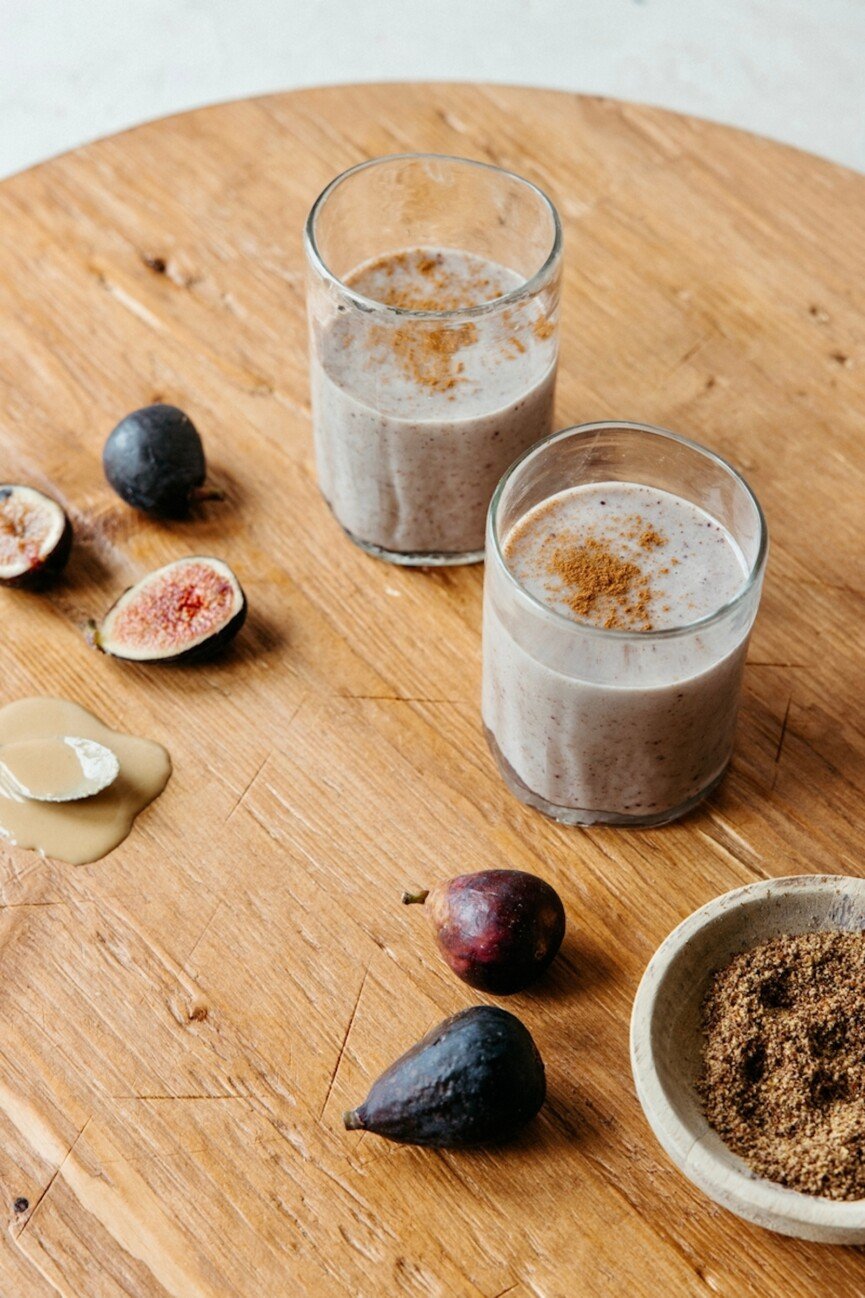
Fall Fig Smoothie
Summer is around the corner, but this fall fig smoothie hits the spot year-round. To increase the fiber count, add 1/3 cup frozen cauliflower rice. You won’t be able to taste it, and your smoothie will be all the creamier.

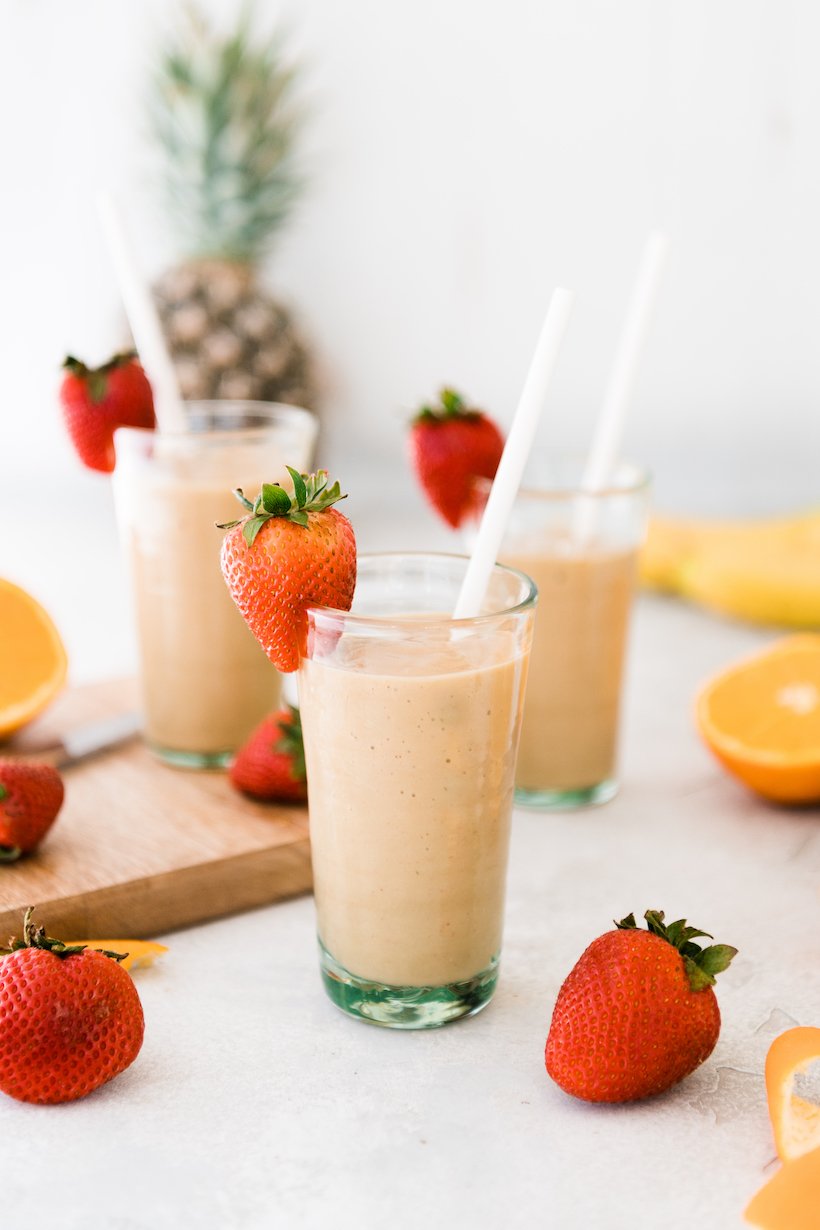
Tropical Pineapple Ginger Smoothie
This smoothie is a household fave—and for good reason! It’s bursting with crowd-pleasing pineapple, strawberries, and bananas. But thanks to the avocado, it isn’t a total blood sugar wrecker. Sub the orange juice for coconut water, omit the honey, and add 1/3 cup of cottage cheese (or Greek yogurt) for more protein. Bonus points for tossing in a tablespoon of hemp seeds!


